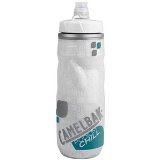Tips
- Be prepared to do some walking, so bring comfortable shoes. Some days I walked up to 6 or 7 miles. There are also very steep hills/streets so keep that in mind before following the route your GPS gives you. The shortest distance may not be the easiest. For instance, it was brutal walking from the bay to Union Square via Mason St. Had I gone down a couple blocks I could have avoided the hill.
- Biking across the Golden Gate Bridge over to Sausalito and taking a ferry back is a great idea. There are many places to rent bikes including Blazing Saddles.Walking to Sausalito is not such a great idea since there is a long stretch of walking on the side of road.
- Sign up and try Uber. Much nicer service then a cab but typically more expensive.
- Avoid walking through the Tenderloin, especially at night. Ask locals or your hotel concierge where that is if you can't figure it out.
- Take advantage of the BART when you can. Great for getting from Union Square to the Mission or Pier 1. The best service I received while in San Francisco was from the vagrant lady who helped me buy my first BART ticket. She was a pro at working that thing. I should have given her a bigger tip considering the service I got elsewhere.
- If you want to spend a whole day exploring the city do one of the open bus tours that allows you to hop-on and hop-off. The one I did had about 20 stops and another bus came about every 20 minutes, so for example you could hop-off and hang out at Haight Ashbury for a while and then continue on after you've spent some time there.
- If you're going to visit Alcatraz and take the Cellhouse Audio Tour (recommended) allow for a good 3-4 hours minimum with travel time. Also, sign up in advance. I wanted to go on a Monday and it was sold out until Wednesday.
- Be ware of the fog. If you're going to do something like take the open top bus tour or visit the Golden Gate, you want to do it on a clear day. The fog can come in and ruin the amazing scenery.
My Favorites
- Zeitgeist - great beer selection reasonably priced. Great bloody marries too!
- Mission Beach Cafe for weekend breakfast - Get a side of their bacon. I'm still thinking about it! There's usually a good hour wait to get in so be prepared for that. We put our name on the list and walked to Zeitgeist to get a bloody marry and timed it perfectly.
- Zero Zero - we had the Avocado Bruschetta, Geary pizza, Little Shells, and build your own desert sunday. It was all excellent. Some of the best food I had while I was there.
- Fog Harbor Fish House - I ate lunch here and had an excellent view of Alcatraz and the Golden Gate. I also had dinner and it was a bit dark to take in the view but the food was still excellent both times.
- Blue Bottle Coffee - excellent coffee
Disappointments
- You can't get into a Giants game using a StubHub ticket/barcode that's on your phone. This is the city that arguably has more startups and innovation then the rest of the world combined AND charges $.10 for each grocery bag you use. I'm dumbfounded that I had to go to will call and have a paper ticket printed off.
- Versus Minnesota, service (like at restaurants) is on average slower and less attentive, but relax you're on vacation. ;)






